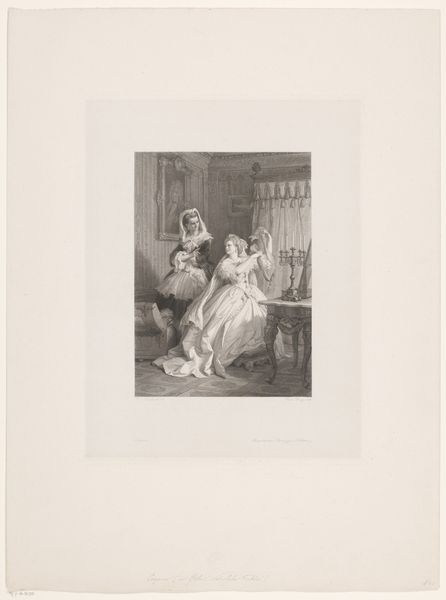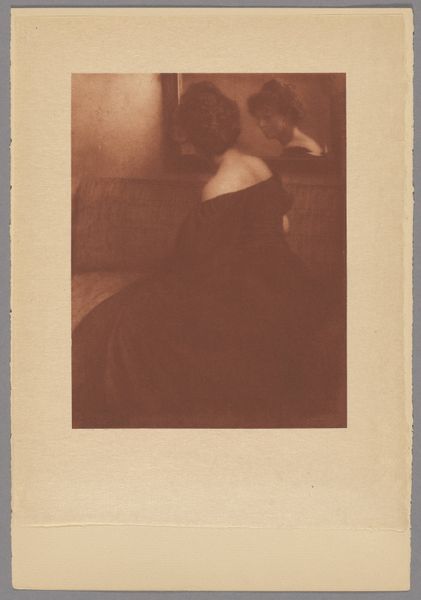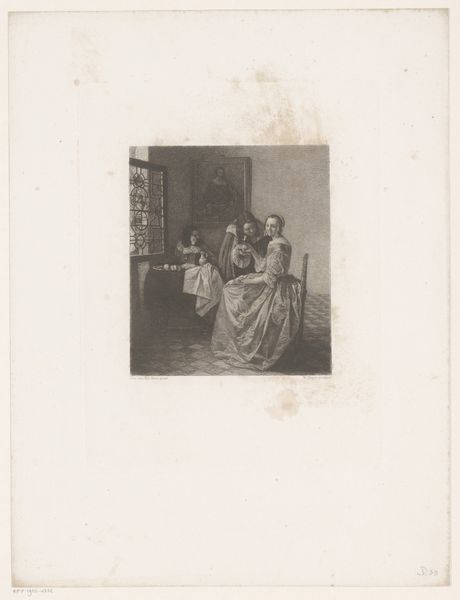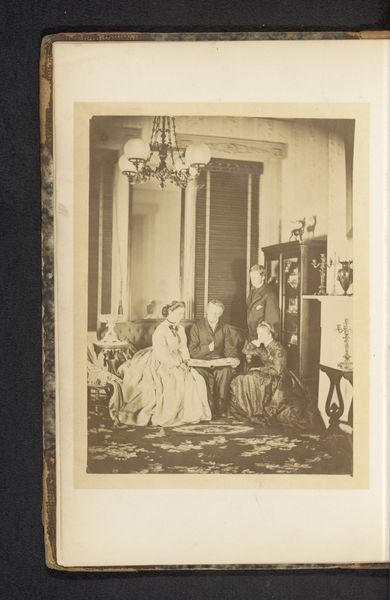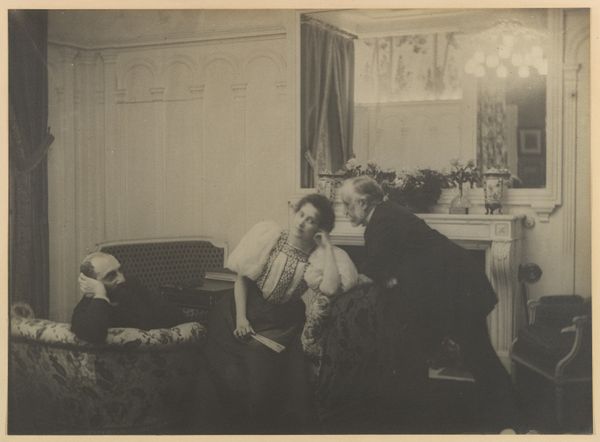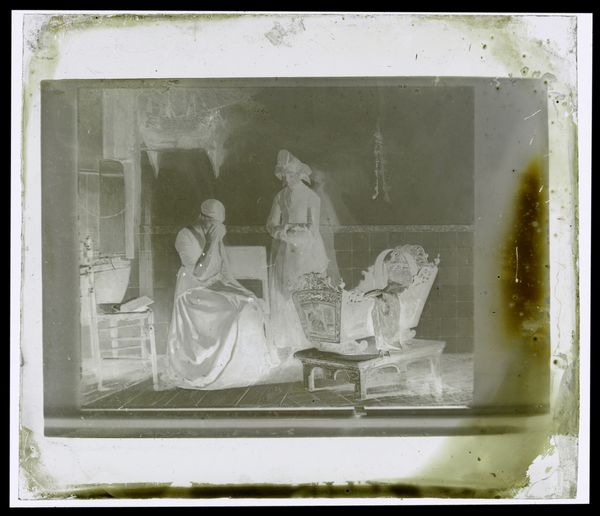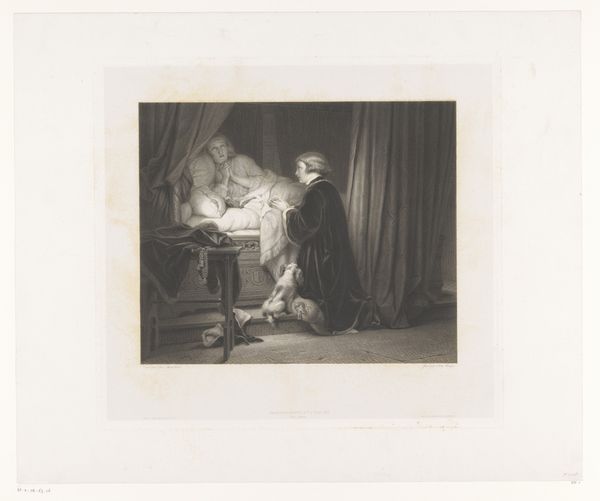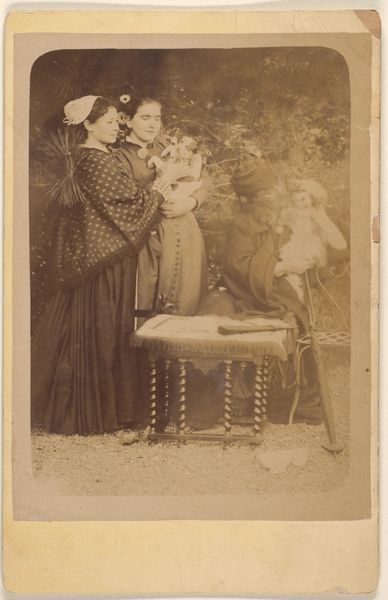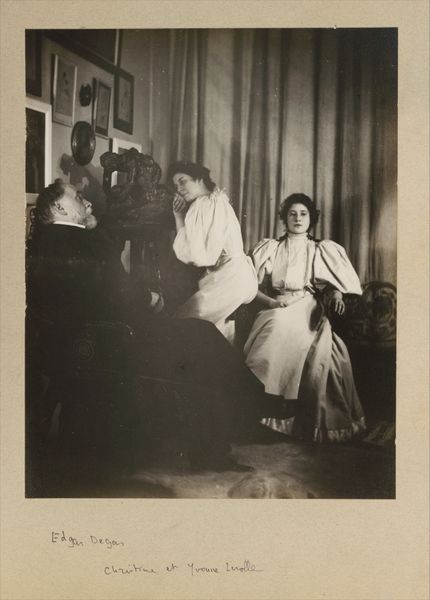
Dimensions: height 204 mm, width 154 mm, height 298 mm, width 207 mm
Copyright: Rijks Museum: Open Domain
Curator: This captivating 1908 work by Guido Rey, titled "Genrevoorstelling gebaseerd op de schilderijen van Jan Vermeer," presents a scene rendered with remarkable photographic detail, almost as an etching, wouldn't you agree? Editor: Absolutely. My immediate impression is one of contained domesticity, of ritualized courtship maybe. There’s an undeniable formality to the arrangement and staging of the figures here. It speaks of established social protocols. Curator: Indeed. Rey's meticulous recreation of Vermeer's style through photographic means allows us to examine how the pictorial language of realism evolves. Observe the light – muted, yet precisely illuminating the woman at her writing desk. The male figure stands patiently, holding a bouquet, a typical feature we see in many genre paintings. Editor: Yes, and precisely the staging hints at larger historical tensions between public and private spheres for women. What could this letter contain? What choices did women really have beyond these orchestrated encounters and carefully managed marriages? Curator: It could, from a formal perspective, highlight the evolution of portraiture, the semiotics of light, or simply explore textures and forms. The subject almost recedes into its stylistic imitation of realism and romanticism, emphasizing representational rather than historical realities. Editor: But Rey’s choice of medium disrupts this. Photography brings its own indexical truth claims. I would read his meticulous historical recreation through contemporary photographic theory. I see this as a conversation about gender roles and the performance of class in domestic settings. It shows the male gaze dictating how and what can be archived through photography. Curator: But it would be limiting to apply too rigid an external grid. The delicate gradations within the monochrome tonality offer the viewer an aesthetic pleasure—perhaps sufficient unto itself. This is Guido Rey offering commentary about aesthetics—by employing careful light to frame his characters— not about political power. Editor: It may be possible for some viewers, but to dismiss such factors of societal impact and leave out elements like gender dynamics is to depoliticize both historical genre paintings and historical portraiture. Curator: I suppose, ultimately, our interpretations reflect different aspects of the photograph’s multifaceted nature, each adding to our deeper understanding of Guido Rey’s piece, regardless of how it was intended. Editor: Right, it's about continually weaving that artwork back into a tapestry of complex perspectives—allowing the art to open out further.
Comments
No comments
Be the first to comment and join the conversation on the ultimate creative platform.
